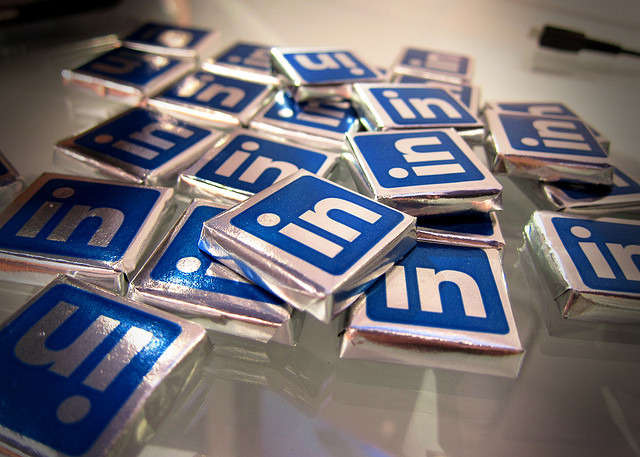
Photo credit: Nan Palmero
LinkedIn is known as the largest and probably most effective social media network for professionals and B2B marketers.
Its business-like atmosphere distinguishes it from most other social networks. When people login to the network, they seek to grow their businesses and advance their careers rather than post photos of their cats and children’s birthday parties.
Yet many marketers and small businesses do not take full advantage of the LinkedIn network. Many limit themselves to posting a profile, basically an online version of their resume.
These are some recommendations from LinkedIn marketing experts on how to better use the platform for both corporate and personal profiles.
Status updates. Business professionals can maintain contact with their networks through status updates, also known as network updates. Simply write, or cut and paste, your update into the white box below your picture on your homepage. You can include a link to an article or attach documents such as white papers or case studies. (Job seekers can attach their resume.)
You can also use LinkedIn’s @mention capability to mention or tag contacts in updates. The contacts will receive an email notifying them that they’ve been mentioned. LinkedIn members outside your network can also be mentioned if they’ve commented on the update. Experts recommend to avoid being constantly promotional, posting sensitive topics, and posting during business hours of your target audience.
LinkedIn Publishing. LinkedIn’s publishing platform, now open to all 345 million members, allows users to publish entire articles. Through LinkedIn publishing, you can obtain more followers, reach a targeted audience since many readers are like-minded professionals and increase your exposure since the platform notifies your connections when you publish.
Sponsored updates. Sponsored updates can expose your enterprise to people who are not in your network. If you target a specific and small audience you can make a cost-efficient investment, and the platform’s analytics enable you to examine impressions, click-through rates and other metrics. You can also compare the effectiveness of sponsored updates to non-sponsored updates.
The Professional Portfolio feature. The feature lets you add photos, videos, linked articles with images, screenshots, infographics and SlideShare presentations — in other words, create a visual profile. Regularly updating the feature with videos of presentations, work samples and screen shots of tweets and other material will keep your profile fresh and up-to-date.
Relationship building. Networking is a main benefit of LinkedIn. Developing ongoing relationships with professionals who can impact your business is more effective than simply accumulating a large number of contacts. After studying their profiles to learn about them and their needs, you can offer to help, recognize and promote them. Many users may not know that they can add people to their networks by asking a contact to introduce them to others.
Discussion groups. Starting discussions and participating in discussion groups can increase your exposure and establish you as an authority. Posing a question is an effective tactic for generating responses. The key is to offer value and not repeatedly post obviously promotional links. Because of the preponderance of discussions in many groups, focusing on smaller, local groups may prompt more people to read your posts. Your comments are more likely to appear prominently in the Discussions tab and stay in the top-listed discussions longer.
Bottom Line: LinkedIn offers valuable features that many professionals may not know about or use frequently. By trying these features, businesses can expand their presence on the network, drive traffic to their websites, and ultimately generate more leads.
Other Articles
9 LinkedIn Marketing Tips from the Pros
Social Media Examiner
How to Master Content Marketing on LinkedIn
HubSpot
15 Tips for Compelling Company Updates on LinkedIn
SlideShare
William J. Comcowich founded and served as CEO of CyberAlert LLC, the predecessor of Glean.info. He is currently serving as Interim CEO and member of the Board of Directors. Glean.info provides customized media monitoring, media measurement and analytics solutions across all types of traditional and social media.




